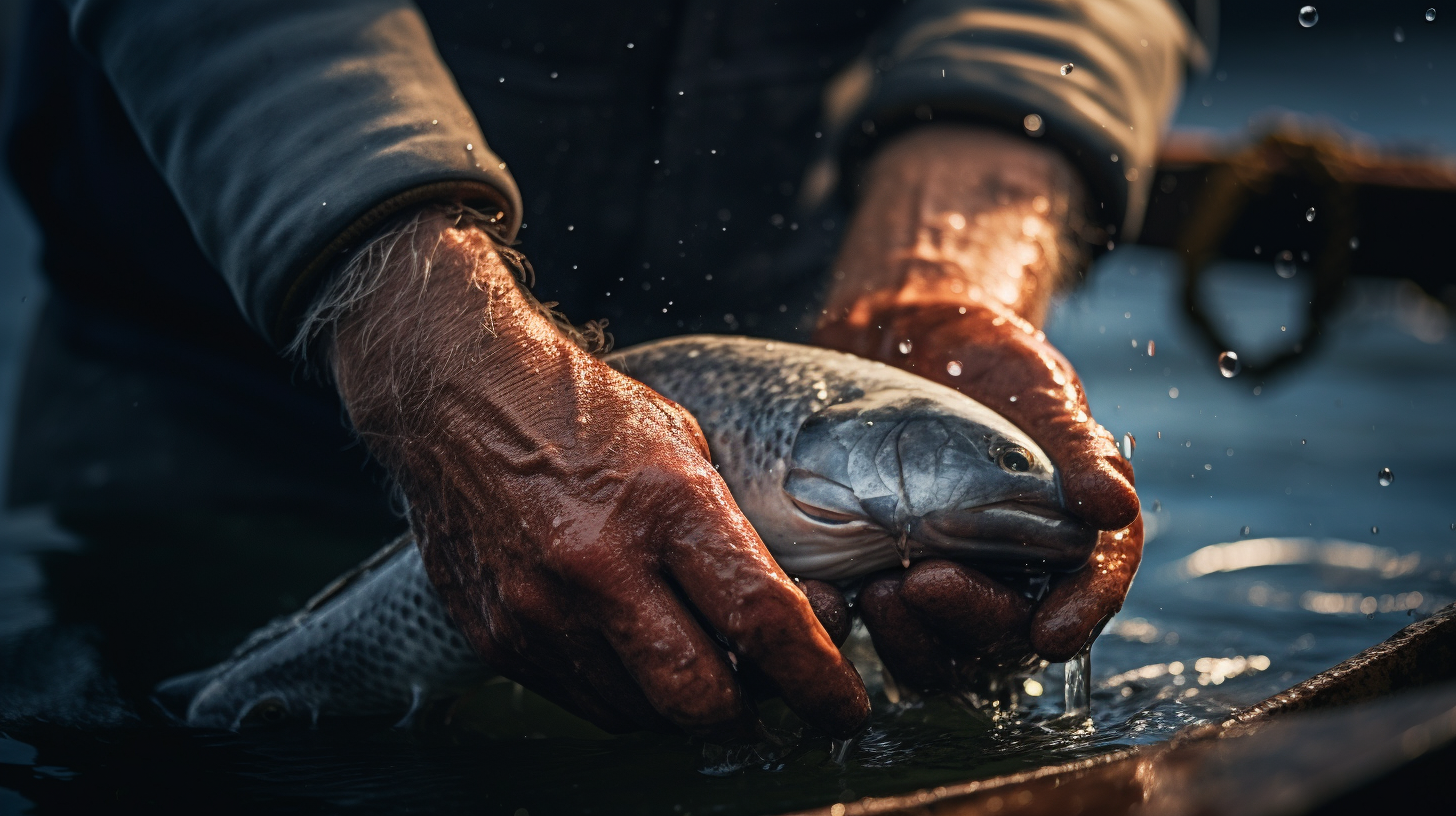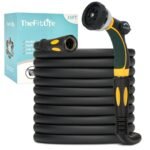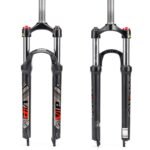Introduction to Bottom Fishing
If you’ve ever cast a line into the deep blue sea, chances are you’ve heard of bottom fishing. Now, I know what you might be thinking – ‘Bottom fishing? That sounds boring and uneventful.’
But let me assure you, my friend, that couldn’t be further from the truth. Bottom fishing is not only an exciting and thrilling way to spend your time on the water, but it also provides ample opportunities for a bountiful catch.
Before we dive into the depths of bottom fishing, let’s address the elephant in the room – the perception that it lacks the adrenaline rush that other types of fishing offer. While it’s true that bottom fishing may not involve the heart-pounding excitement of reeling in a marlin or battling a feisty tuna, it has its own unique charm.
The beauty of bottom fishing lies in its simplicity and reliability. It’s a method that consistently yields results, making it perfect for those who value the certainty of a catch over the uncertainty of a chase.
So, if you’re someone who craves the freedom of spending a day on the water without worrying about coming back empty-handed, bottom fishing might just be your ticket to fishing bliss.
Key Takeaways
- Bottom fishing is a reliable and simple technique for catching fish.
- Thorough research and proper equipment are necessary to minimize potential losses in bottom fishing.
- Choosing the right location and using suitable bait based on fish preferences increase the chances of success in bottom fishing.
- Different techniques like slow trolling and vertical jigging can enhance the effectiveness of bottom fishing.
Understanding the Basics of Bottom Fishing
Bottom fishing is a popular fishing technique that involves dropping the baited fishing line to the bottom of the water body, such as the ocean, lake, or river, to target fish that dwell near the seabed or lake floor.
Read More OutdoorGoodness Articles
This method is widely used to catch various species of fish that reside close to the bottom, including cod, snapper, grouper, flounder, halibut, catfish, and more.
Here’s how bottom fishing typically works:
- Tackle and Equipment: Anglers use specialized bottom fishing rods, reels, and lines designed to handle the weight and resistance encountered when fishing in deeper waters. The fishing rods are often sturdier and have a stronger backbone to handle the pressure of lifting fish from the depths.
- Bait and Lures: Different types of baits are used for bottom fishing, depending on the target species and the fishing location. Common baits include cut bait (e.g., pieces of fish), squid, shrimp, clams, or other natural offerings that appeal to the bottom-dwelling fish.
- Sinker or Weight: To get the bait down to the bottom, a sinker or weight is attached to the end of the fishing line. The weight’s size and shape may vary depending on the depth of the water, the strength of the current, and the targeted fish species.
- Dropping the Line: Once the bait is secured and the sinker is attached, the angler lowers the fishing line into the water until it reaches the bottom. The line is then held steady or slowly reeled in just enough to maintain contact with the bottom.
- Waiting for Bites: The angler waits patiently for bites from bottom-dwelling fish. When a fish takes the bait, the angler feels a tug or sees a sudden movement in the fishing rod.
- Setting the Hook: When the angler detects a fish taking the bait, they set the hook by quickly jerking the rod upwards. This action drives the hook into the fish’s mouth, securing the catch.
- Reeling in the Fish: After hooking the fish, the angler reels it in, taking care to maintain tension on the line to prevent the fish from escaping. Bottom-dwelling fish can be strong and put up a fight, so the angler needs to use their fishing skills to bring the catch to the surface successfully.
Bottom fishing is a versatile and effective technique used in both recreational and commercial fishing. It allows anglers to target a wide range of fish species and is particularly popular for catching larger and heavier fish that reside in deeper waters.
It’s essential to adhere to local fishing regulations and practice sustainable fishing practices to protect marine ecosystems and ensure a healthy fish population for the future.
Another aspect to consider is the impact of bottom fishing on marine ecosystems. While bottom fishing refers to the investment strategy, it is also a term used in the context of fishing in marine environments. Bottom fishing involves the practice of dropping a fishing line or net to the ocean floor to catch fish that live near the seabed.
This fishing technique can have negative consequences on marine ecosystems, as it often results in the capture of non-target species and the destruction of habitats. It’s important for anglers and fishing enthusiasts to be aware of sustainable fishing practices and regulations to minimize the ecological impact of bottom fishing.
Now, let’s move on to the next section where we will discuss the essential equipment and gear needed for successful bottom fishing.
Essential Equipment and Gear for Bottom Fishing
Equipping yourself with the right gear will ensure a successful underwater expedition, like a fisherman armed with a trusty net and a sturdy rod. When it comes to bottom fishing, having the proper equipment is crucial.
The first step is to choose the best bait for bottom fishing. Common options include live bait such as shrimp, squid, or small fish. These baits are effective in attracting bottom-dwelling fish like grouper, snapper, and flounder.
Additionally, using artificial lures such as jigs or soft plastics can also yield good results. It’s important to experiment with different baits to see what works best in your specific fishing location.
Once you have your bait, the next step is to set up a bottom fishing rig. The rig consists of a weight, a leader line, and a hook. The weight is necessary to keep your bait on the bottom, where the fish are. It’s important to choose the right weight based on the depth and current of the water you’re fishing in.
The leader line should be strong enough to handle the fish you’re targeting, typically between 20-50lb test line. Finally, choose a hook size that matches the bait you’re using and the fish you’re targeting. Properly setting up your bottom fishing rig is essential for maximizing your chances of success.
Transitioning into the subsequent section about choosing the right location for bottom fishing, it’s important to consider factors such as depth, structure, and current. These elements play a significant role in the behavior and feeding patterns of bottom-dwelling fish. By understanding these factors and selecting the right location, you’ll increase your chances of landing a prized catch.
Choosing the Right Location for Bottom Fishing
Finding the perfect spot to drop your line can make all the difference in reeling in that trophy-worthy catch. When it comes to bottom fishing, choosing the right location is crucial for a successful fishing trip.
The best time to go bottom fishing is typically during the low tide, as it exposes more of the bottom structure where fish like to hide. During low tide, you can easily identify potential hotspots such as rocky areas, reefs, or underwater structures where fish congregate.
Additionally, it’s important to consider the water temperature and currents, as they play a significant role in the fish’s behavior and feeding patterns. By studying tide charts and understanding the fish species you’re targeting, you can increase your chances of finding the ideal location for bottom fishing.
In addition to timing, using suitable bait is another essential factor in choosing the right location for bottom fishing. Different fish species have different preferences when it comes to bait, so it’s important to do your research beforehand.
For example, if you’re targeting bottom-dwelling species like groupers or snappers, using live or cut bait such as squid, mullet, or shrimp can be highly effective. On the other hand, if you’re targeting larger predatory fish like sharks or barracudas, using larger baits such as whole fish or chunks of meat can attract their attention.
By understanding the preferences of the fish you’re targeting and using the appropriate bait, you can maximize your chances of success when bottom fishing.
Transitioning into the subsequent section about ‘techniques and tips for successful bottom fishing,’ it’s important to remember that location and bait are just two pieces of the puzzle. To further enhance your bottom fishing skills, there are various techniques and tips that can improve your chances of landing a big catch.
Techniques and Tips for Successful Bottom Fishing
Mastering the art of reeling in the big ones requires employing clever strategies and honing your skills in the underwater treasure hunt. When it comes to bottom fishing, using the right techniques and selecting effective bait can make all the difference in your success. To maximize your chances of landing a prized catch, here are some key bottom fishing techniques to keep in mind.
First and foremost, it’s important to choose the right bait for bottom fishing. Different species have different preferences, so it’s essential to do your research and understand what type of bait will attract the fish you’re targeting.
Common bottom fishing baits include squid, shrimp, cut bait, and various types of fish. Experimenting with different baits and observing the response from the fish can help you determine what works best in your fishing spot.
Additionally, it’s crucial to present your bait in an enticing manner. This involves ensuring your bait is securely attached to the hook and positioning it near the bottom where the fish are likely to be feeding.
Using a variety of techniques such as slow trolling, jigging, or bottom bouncing can also increase your chances of success.
To evoke emotion and engage the audience, here is a table showcasing different bottom fishing techniques and their effectiveness:
| Technique | Effectiveness |
|---|---|
| Slow Trolling | High |
| Jigging | Medium |
| Bottom Bouncing | Low |
| Drifting | Medium |
| Vertical Jigging | High |
By incorporating these techniques into your bottom fishing arsenal, you’ll increase your chances of success and reel in some impressive catches. Now that we’ve covered effective bait selection and fishing techniques, let’s dive into the common species and catches you can expect while bottom fishing.
Common Species and Catches in Bottom Fishing
Utilizing appropriate techniques and selecting the right bait can lead to successful encounters with a variety of sought-after species in the depths of the ocean. When it comes to bottom fishing, there are several deep-sea species that are commonly targeted.
One of the most popular catches is the grouper, known for its delicious flesh and challenging fight. Other common species include snapper, sea bass, and halibut. These bottom-dwelling fish are often found near structures such as reefs, wrecks, and rocky outcrops. By targeting these areas and using the right techniques, anglers have a higher chance of hooking into these prized species.
In order to entice these deep-sea species, it’s important to use the best bait for bottom fishing. Depending on the target species, different baits can be effective. For grouper and snapper, live bait such as pinfish, grunts, or sardines are often the most successful. These baits mimic the natural prey of these fish and can be presented on a bottom rig or a jig.
Sea bass, on the other hand, are more likely to go for artificial baits such as soft plastic grubs or jigs tipped with squid or shrimp. Halibut, known for their voracious appetite, can be caught using a variety of baits including squid, herring, or even live baitfish.
By experimenting with different bait options and observing the behavior of the targeted species, anglers can increase their chances of a successful catch in the depths of the ocean.
Frequently Asked Questions
Is bottom fishing suitable for beginners or is it more advanced?
Bottom fishing techniques can be suitable for beginners, but advanced techniques require more experience. Beginners can start with basic bottom fishing methods, gradually learning and incorporating more advanced techniques as they gain expertise.
What are some common mistakes to avoid while bottom fishing?
Common mistakes to avoid when bottom fishing include using the wrong bait, not adjusting to changing conditions, and not properly setting the hook. To achieve success, it is important to research and understand the targeted species and their feeding habits.
Are there any specific regulations or permits required for bottom fishing?
Regulation requirements and permits needed for bottom fishing vary depending on the location and species being targeted. It’s important to research and comply with local fishing regulations to ensure a responsible and sustainable fishing experience.
How does bottom fishing differ from other types of fishing, such as trolling or fly fishing?
Bottom fishing differs from other types of fishing, like trolling or fly fishing, in that it primarily targets fish that dwell near the ocean floor. The advantage of bottom fishing over deep sea fishing is the accessibility and abundance of fish species.
What are some popular bait options for bottom fishing and how can I effectively present them to attract fish?
To effectively attract fish while bottom fishing, popular bait options include squid, shrimp, and cut bait. Beginners can use a simple sliding sinker rig, while advanced anglers can experiment with Carolina rigs. Avoid common mistakes like using too much weight or not adjusting to changing conditions. Check local regulations and obtain necessary permits. Bottom fishing differs from trolling and fly fishing in terms of technique, gear, and target species.
Conclusion
In conclusion, bottom fishing is a popular and rewarding fishing technique that requires the right equipment, knowledge of the right locations, and effective techniques.
With the right gear, such as a sturdy fishing rod, a strong fishing line, and a variety of baits and lures, anglers can increase their chances of success.
Choosing the right location, such as rocky bottoms or areas with underwater structures, can also significantly improve the chances of catching desired species.
Techniques such as anchoring the boat, using a fish finder to locate potential hotspots, and varying the depth at which the bait is presented can greatly enhance the chances of a successful catch.
Additionally, being knowledgeable about the common species in the area and the specific behaviors and preferences of those species can also contribute to a more fruitful bottom fishing experience.
While bottom fishing holds the potential for a bountiful catch, it is important to note that success can vary depending on factors such as weather conditions, time of day, and the skill and experience of the angler. Therefore, it is essential to stay informed and adaptable, continuously learning and adjusting tactics to increase the likelihood of success.
In summary, bottom fishing is a technique that requires careful preparation, the right gear, and knowledge of the targeted species. By understanding the basics, having the essential equipment, and employing effective techniques, anglers can increase their chances of a successful catch.
However, it’s important to remember that fishing is not an exact science, and success can vary. So, whether you’re a seasoned angler or a beginner, embrace the challenges and joys of bottom fishing and enjoy the thrill of the catch.

Meet Kevin Goodell, your outdoor adventure coach! With a passion for nature ignited in childhood, Kevin brings a wealth of experience and expertise to simplify tough outdoor skills. As a U.S. Army veteran and former Sergeant, he has honed his leadership and teamwork abilities while developing a deep love for the great outdoors.
Kevin’s dedication to outdoor activities spans biking, birdwatching, national park trips, and archery/golf. With his friendly and approachable demeanor, he is committed to guiding individuals of all ages and skill levels towards unforgettable outdoor experiences.
Harnessing his extensive knowledge and personal achievements, Kevin is your go-to resource for learning and enjoying various outdoor pursuits. Whether you seek thrilling adventures or serene nature escapes, Kevin’s professional yet friendly approach will ensure an engaging and informative experience. Embark on your next outdoor adventure with Kevin Goodell and embrace the beauty of nature like never before.






